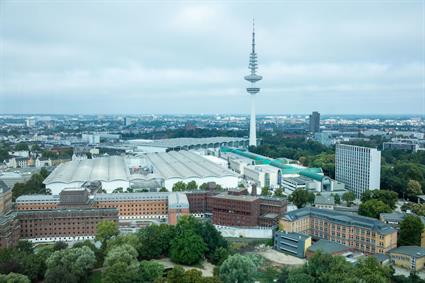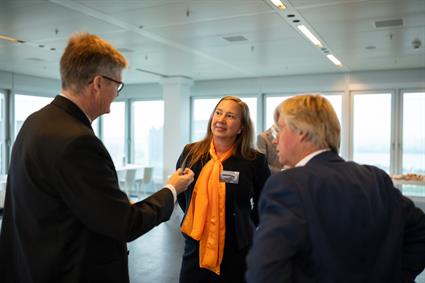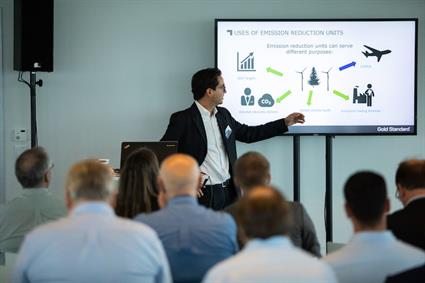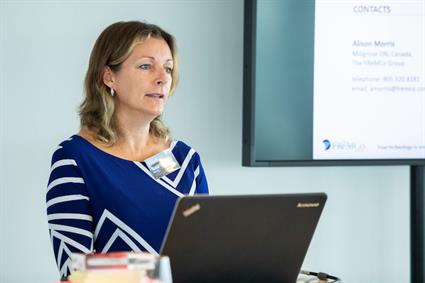

The global shipping industry is navigating towards a greener and more sustainable future. It is working on environment-friendly solutions like better equipment and cleaner vessels, but these require large investments and pay off over the long-term. Wärtsilä’s Future Innovation Day Workshop held this September in Hamburg revealed why carbon credits could be a quicker and more efficient solution to tackle emissions.
It is time for a big change for the global shipping sector that accounts for 90% of the international transport and is responsible for 2–3% of the world’s CO₂ emissions. According to a study by International Maritime Organization (IMO), as world transport grows, the shipping sector’s Green House Gas (GHG) emissions are expected to rise by 50–250% by 2050 and account for more than 10% of global emissions.
The sector is already committed to capping sulphur emissions from fuel oil at 0.50%m/m (mass by mass) by 2020. Additionally, in April 2017, 170 countries committed to reducing their maritime emissions by 50% by 2050, compared to the 2008 levels (estimated at 4.5% of global emissions) at a meeting with the United Nations International Maritime Organization (IMO) in London.
The commitment at the IMO meeting has dramatically changed the discourse on where the shipping sector is headed with its CO₂ emissions hereon.
Large companies like Wärtsilä are taking the lead in co-developing ideas, defining the next steps for creating tangible products and exploring new business models to tackle emissions. Wärtsilä’s Future Innovation Workshop held in Hamburg explored the use of carbon credits as an effective way to provide incentives to the cleanest companies and collect taxes from polluters.
Wärtsilä’s Future Innovation Day Workshop was held in Hamburg.
In focus: Carbon Credits
Wärtsilä’s Innovation Director Johanna Fräki and General Manager, Ecosystem Innovation Teus van Beek delivered a White Paper on how carbon credits can be applied to new builds as well as retrofits by extending the existing technologies. Speaking at the event, van Beek said, “We can tackle emissions by pricing and enabling a smart marine ecosystem co-financed by carbon credits. They can be used as a means to support the energy transition in shipping and companies need to take a stand and put a value on CO₂.”
Wärtsilä’s Innovation Director Johanna Fräki and General Manager, Ecosystem Innovation Teus van Beek (right).
A carbon credit is a tradable permit or certificate to produce 1 ton of CO₂. If unused, these credits can be traded with organisations or countries that have higher CO₂ emissions.
The workshop aimed at developing a future system that works, figuring out how the marine industry can collaborate to use carbon credits, the possible benchmarks for new ships and how to increase the value of carbon credits. It was attended by several companies and organisations including Thyssenkrupp Marine Systems, Marstrat BV, Lloyd's Register, SEA Europe, PortXL, GoodFuels, Magnuss, Danish Shipping, The FReMCo Corporation, Silverstream Technologies), Carnival Corporation & PLC, HS Bremerhaven, Deutsche Stiftung Sail Training, The Gold Standard Foundation and ING Bank.
Bernardo Lazo, Director, Partnerships and Business Development, The Gold Standard Foundation (Founded by WWF and NGOs under UN’s Clean Development Mechanism), said that 88 countries are already thinking about carbon pricing and 51 initiatives for carbon pricing, accounting for 20% of global emissions, are already underway. Lazo explained that a voluntary carbon market can raise the ambition level for climate action and applying GHG (Green House Gas) methodologies and certifying emission can help prepare the sector for future market mechanisms.
Bernardo Lazo, Director, Partnerships and Business Development, The Gold Standard Foundation.
A compliance driven carbon credit market is driven by the need to comply with mandatory regulations or acts, it has a fixed set of people that can participate. Whereas a voluntary market functions outside the compliance market and gives everyone a chance to reduce their carbon footprint by purchasing offsets created through the Clean Development Mechanism (CDM) and VERs (Verified or Voluntary Emissions Reductions). Countries can partly meet their emissions targets by financing emission reductions projects in developing countries via the CDM. Typically, a voluntary market has lower volumes driven by lower demand and offsets tend to be cheaper than they are in the compliance market.
Alison Morris, Senior Business Manager at The FReMCo Corporation spoke about how emission trading is a good business strategy that helps increase competitiveness while reducing emissions. She spoke about creating a voluntary market for carbon pricing and credits, which could feed into the compliance market and explained why early movers will be at an advantage in this game.
Alison Morris, Senior Business Manager at The FReMCo Corporation.
Building a smart ecosystem
Interestingly, a voluntary system has already been in place since the Kyoto protocol. But the marine industry has not taken to carbon credits yet because of a poor pricing mechanism, complicated processes, a minimum one-year waiting period after the operation of the vessel and the lack of incentives. The waiting period is a requirement as per the current voluntary market rules.
“Ship operators are interested in supporting the clean-up of the marine industry but the business model currently in place does not support that. They have no possibility to start funding more expensive equipment in many of the business and operating models today. Carbon credits are a new way of finding out how we can prefund a bit more expensive but cleaner equipment and then get shared benefits while using those vessels,” explains van Beek.
The workshop recognised that apart from vessel owners, other stakeholders like customers and ports, that have the highest exposure, must also be included in building a cleaner marine sector through ‘green funds’ connected to carbon credits.
The workshop concluded that tokenising carbon credits via blockchain technologies (similar to Bitcoin) could emerge as a good option to virtualise and prefund them. Wärtsilä is now committed to testing and creating a ‘mini ecosystem’ for cryptocurrency/blockchain based validation and trading as a student project. It is also working on a pilot project that will test carbon credits trading before proceeding to cover the sector at large.





